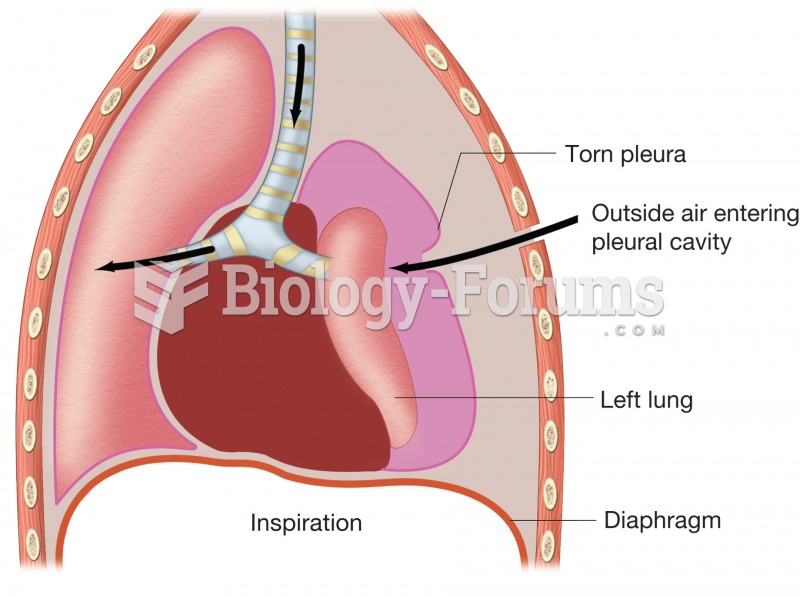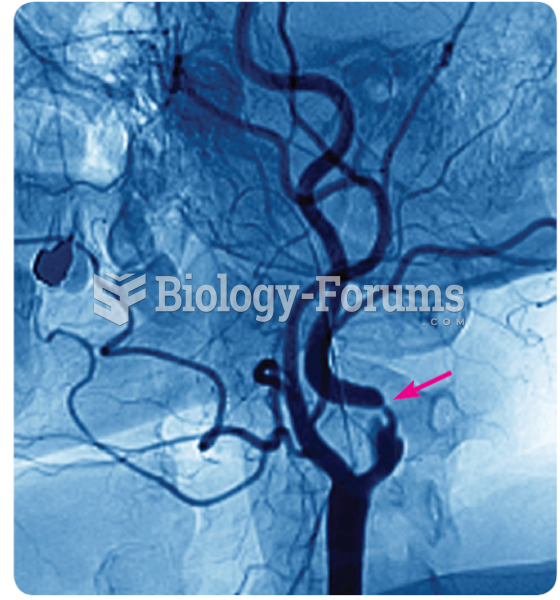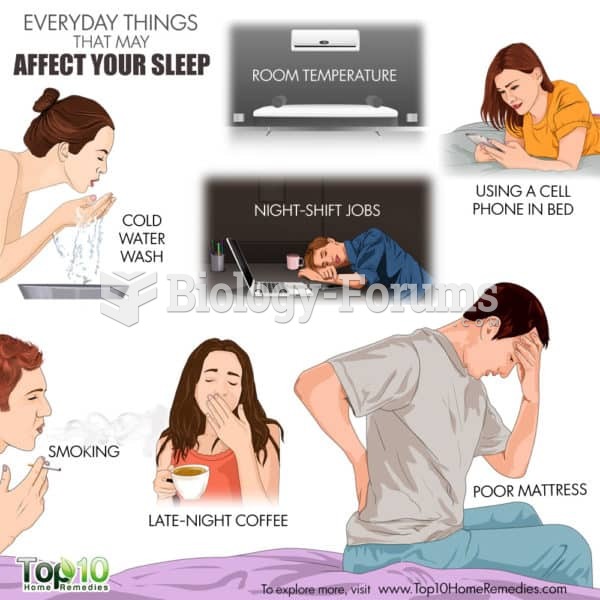This topic contains a solution. Click here to go to the answer
|
|
|
Did you know?
Asthma occurs in one in 11 children and in one in 12 adults. African Americans and Latinos have a higher risk for developing asthma than other groups.
Did you know?
Patients who cannot swallow may receive nutrition via a parenteral route—usually, a catheter is inserted through the chest into a large vein going into the heart.
Did you know?
When taking monoamine oxidase inhibitors, people should avoid a variety of foods, which include alcoholic beverages, bean curd, broad (fava) bean pods, cheese, fish, ginseng, protein extracts, meat, sauerkraut, shrimp paste, soups, and yeast.
Did you know?
Eat fiber! A diet high in fiber can help lower cholesterol levels by as much as 10%.
Did you know?
Alcohol acts as a diuretic. Eight ounces of water is needed to metabolize just 1 ounce of alcohol.
 Pneumothorax. Figure illustrates how puncture of thoracic wall and tearing of pleural membrane allow
Pneumothorax. Figure illustrates how puncture of thoracic wall and tearing of pleural membrane allow
 A shim (or half shim) may be needed to provide the proper clearance between the flywheel teeth of ...
A shim (or half shim) may be needed to provide the proper clearance between the flywheel teeth of ...





